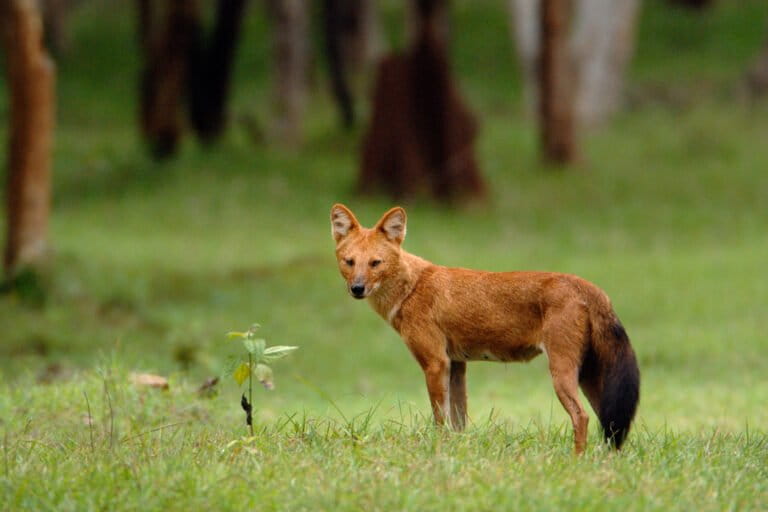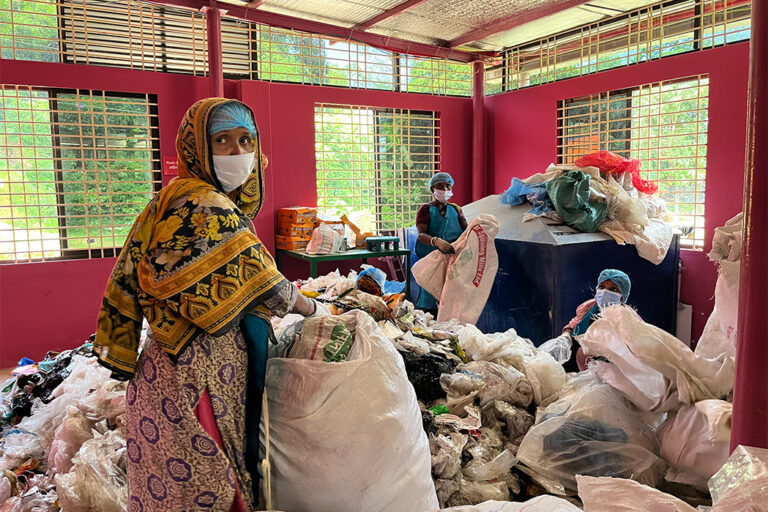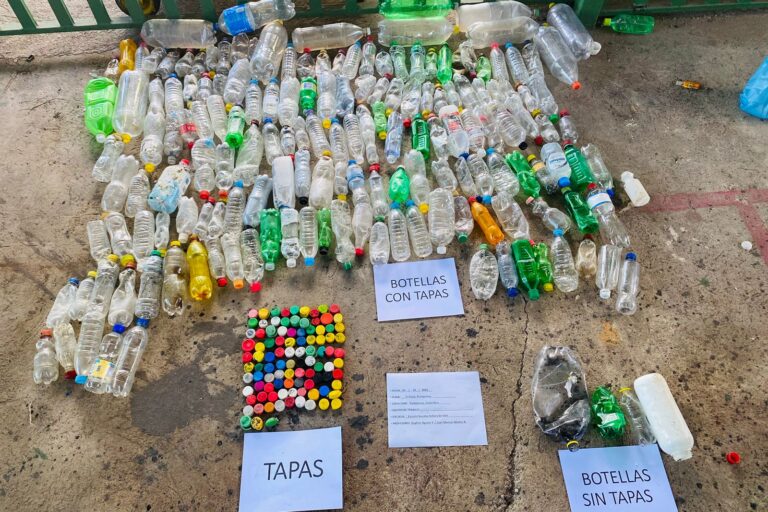- Prolonged drought in Kenya has caused a water crisis, threatening local livelihoods and biodiversity; one of the badly affected areas is Kiambu County, a region normally known for its high agricultural productivity.
- Human activities such as dumping, encroachment and overgrazing coupled with dire effects of climate change exacerbate the degradation of wetlands, worsening the water crisis.
- Scientists say that conservation efforts must center around local communities to ensure the restoration of natural resources and combat the impacts of climate change.
LIMURU, Kenya — Kiambu County in Kenya is facing a major water scarcity crisis that is threatening not only people’s livelihoods but also biodiversity. Rivers and wetlands that were once roaring with life are now dry and barren. With prolonged drought worsening the situation, residents are worried about the long-term implications and the drastic decrease in water supply over the last few years. Of particular concern is the Manguo swamp, a wetland that is not only a source of water for the community but also a rich harbor for biodiversity, which has, for the first time since the residents can remember, totally dried up.
Kiambu county, located in central Kenya, is the second most populous county in the country. It is located north of the capital, Nairobi, and is known for its lush greenery and rich fertile lands famous for Irish potatoes, cabbages, pears and other horticultural crops, supplying a large extent of Nairobi’s food needs.
Many residents are worried about news of drying rivers and boreholes, drilled by homeowners and the government to locate water, plus a looming local water crisis.
The Manguo swamp — or what used to be — sits near Limuru town, about 40 kilometers (25 miles) from Nairobi. Along the Nairobi-Nakuru highway, at the junction with Kiambu Road, is a barren depression about seven football fields long and four football fields across. Herders and their flocks of sheep are scattered across the desert-like depression, with only countable patches of green grass remaining. One of the herders is 65-year old James Njuguna, who was born and raised here.
“This is the Manguo swamp you’ve heard about,” says Njuguna. “It is now totally dry!”
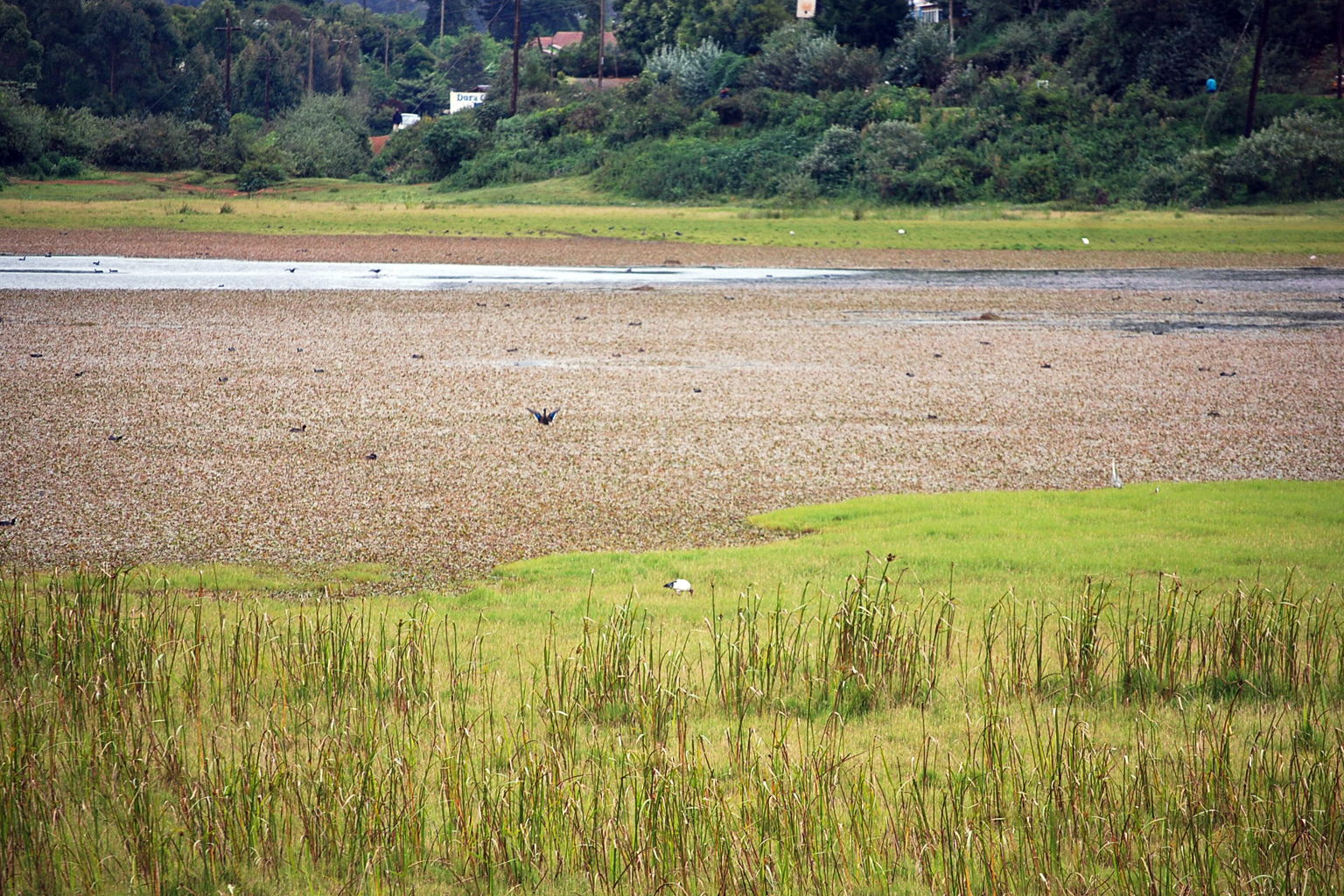
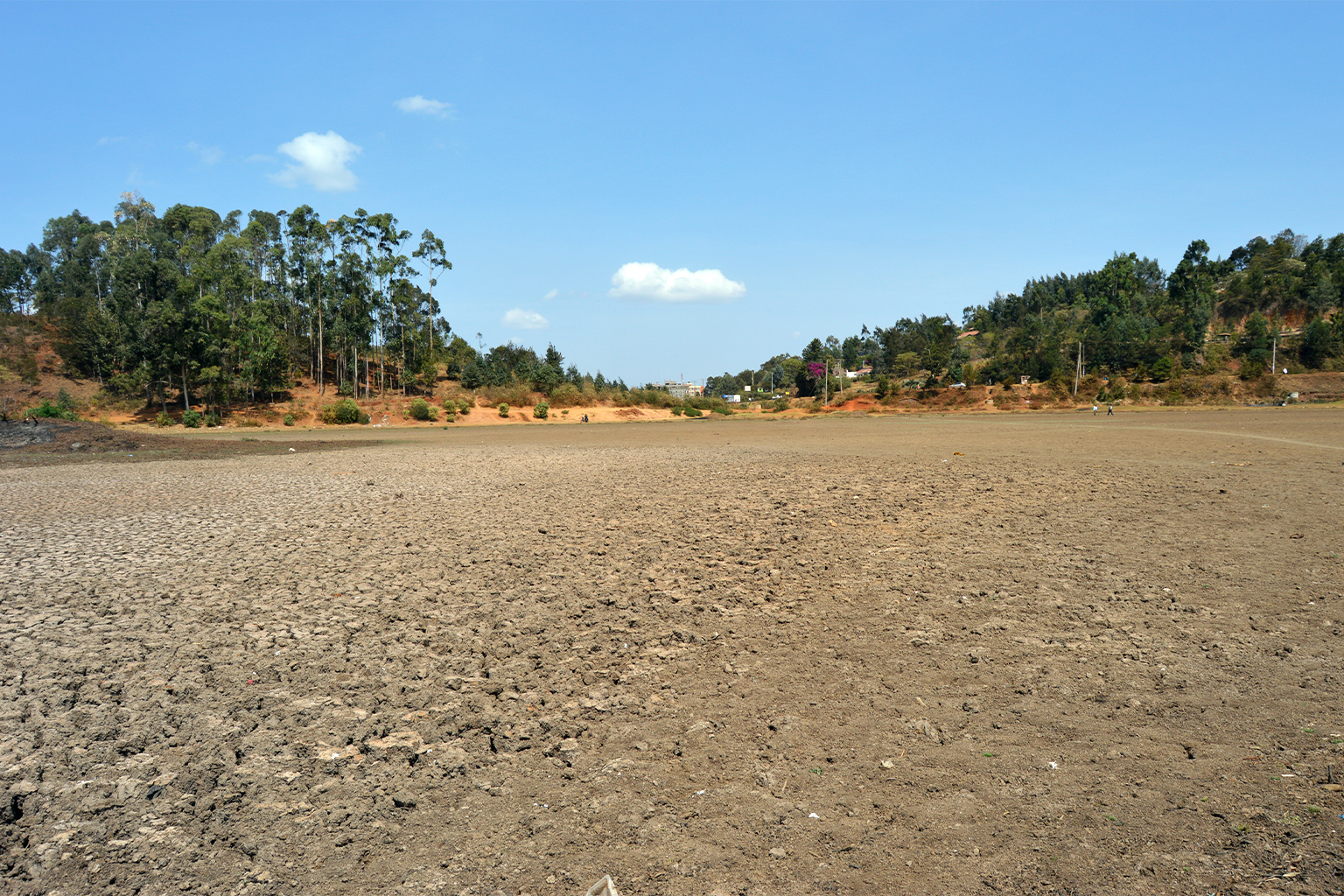
Online images of Manguo swamp from 2017 depict a picturesque marshy wetland harboring ducks, herons, crested cranes and a variety of other birds and wildlife. Now, the water and vegetation are gone, with hardly any birds or wildlife in sight. Manguo swamp was a 30-hectare (74-acre) wetland, but what is left of it is a water-starved area with dusty footpaths criss-crossing through it.
“I have lived here for 65 years and never have I ever witnessed Manguo [swamp] this dry. During droughts, the swamp dries up but the center usually retains some water,” Njuguna says.
Ironically, during some rainy seasons — particularly during the long rains between April and June — the swamp floods, forcing residents to dig outlet channels. At full capacity, water rises to a depth of about 6 feet. “During rainy seasons, it is impossible to get in here. We would be submerged in the water now,” Njuguna says. According to him, the swamp has never been passable before. But now, cracks on the dry floor are the only evidence that it once had water.
Njuguna’s family used to rely on water from the swamp for domestic and livestock purposes, but that changed 25 years ago when they got access to tapped water. According to him, many local residents cannot afford to install piped water supplied by the government-run Limuru Water and Sewerage Co. Ltd. Nonetheless, he says, the water bills are higher now since he has to give the tapped water to his more than 100 sheep, which previously would drink from Manguo swamp. Normally, he and his family use 6 cubic meters (about 1,600 gallons) of water per month at a cost of 480 shillings ($3.7), but now he pays at least five times this. He says this has substantially affected his income from selling sheep. Njuguna tells Mongabay that many residents of Limuru in Kiambu county depend on water from boreholes, many of which are also drying up.
Satellite images of the Manguo swamp in 2017 and 2022. Images by Google Earth.
A 2011 study, published in the journal Biodiversity, focused on the management of highland wetlands in Kenya, using Manguo and Ondiri swamps as case studies. According to the study, human activities such as dumping of solid waste, encroachment, agriculture, overexploitation and overgrazing were listed as major threats to the wetlands. Jane Macharia, a research scientist at the National Museums of Kenya and lead author of the study, says these problems have persisted and have been made worse by climate change. Kenya is currently witnessing a drought reported to be the worst in 40 years, leaving a number of the country’s wetlands dry. Lake Ol Bolossat is one such wetland that, like Manguo, has dried up.
“While it is surprising [the drying of Manguo swamp], it is something that cuts across the country,” Macharia says. With the long rains through June, she says, “most rivers and wetlands will recover, but I think that should not be comforting; we have to take steps towards measures to restore our [water] catchment areas.”
But, according to her, local communities can lack trust in conservationists, and are thus reluctant to support efforts to conserve wetlands. Most conservation projects, being donor-funded and periodic, can lead local communities to doubt their legitimacy when they end without a clear long-term solution. Nevertheless, Macharia says, she believes conservation initiatives that include genuine partnership with community members, communication, education, public participation and awareness will be successful.
“If you are made to know the need to do something, you will do it freely. You will engage in good practices freely,” she says.


Meanwhile, Njuguna may be feeling the pangs of water scarcity, but George Karanja, a youthful man who approaches us as we speak, is worse off. Karanja listens for a few moments before jumping into the conversation.
“When there is no water in the house, I don’t think you can stay in that house,” Karanja says, “especially with a wife and kids — the house is uninhabitable without water!” He goes on to list all the things they need water for, from sanitation to food preparation. After a short conversation, he offers to take us around the village to different water points and eventually to his home, 5 km (3.1 mi) from Manguo.
On the way to Karanja’s place, we make two stops: Bibirioni water station and Peter Mwangi’s home. Bibirioni is a privately owned water company that usually supplies water to the majority of Nyambare village residents, but when we visit, it is deserted with no sign of activity. Two steel pipes extend from one wall of a structure of about 3 meters by 2 meters (10 feet by 6.5 feet) with six plastic tanks at the top. The pipes lay dormant, their walls and surface parched and caked by dust, apparently untouched by the soft trickle of water they once carried. (As of publication, the manager of Bibirioni water company has not responded to Mongabay’s requests for comment.)
“This station hasn’t pumped water now for over six months,” Karanja says.
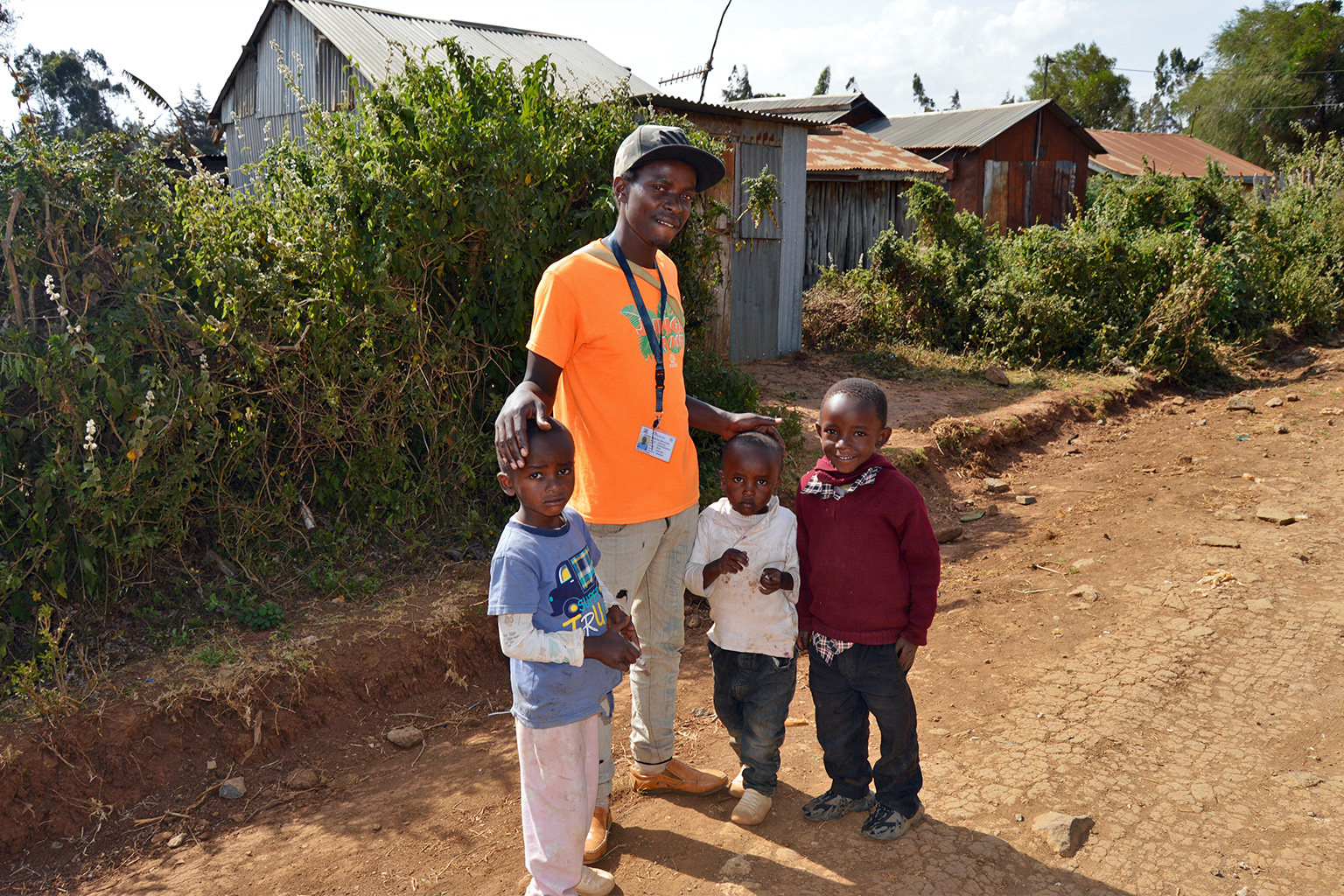
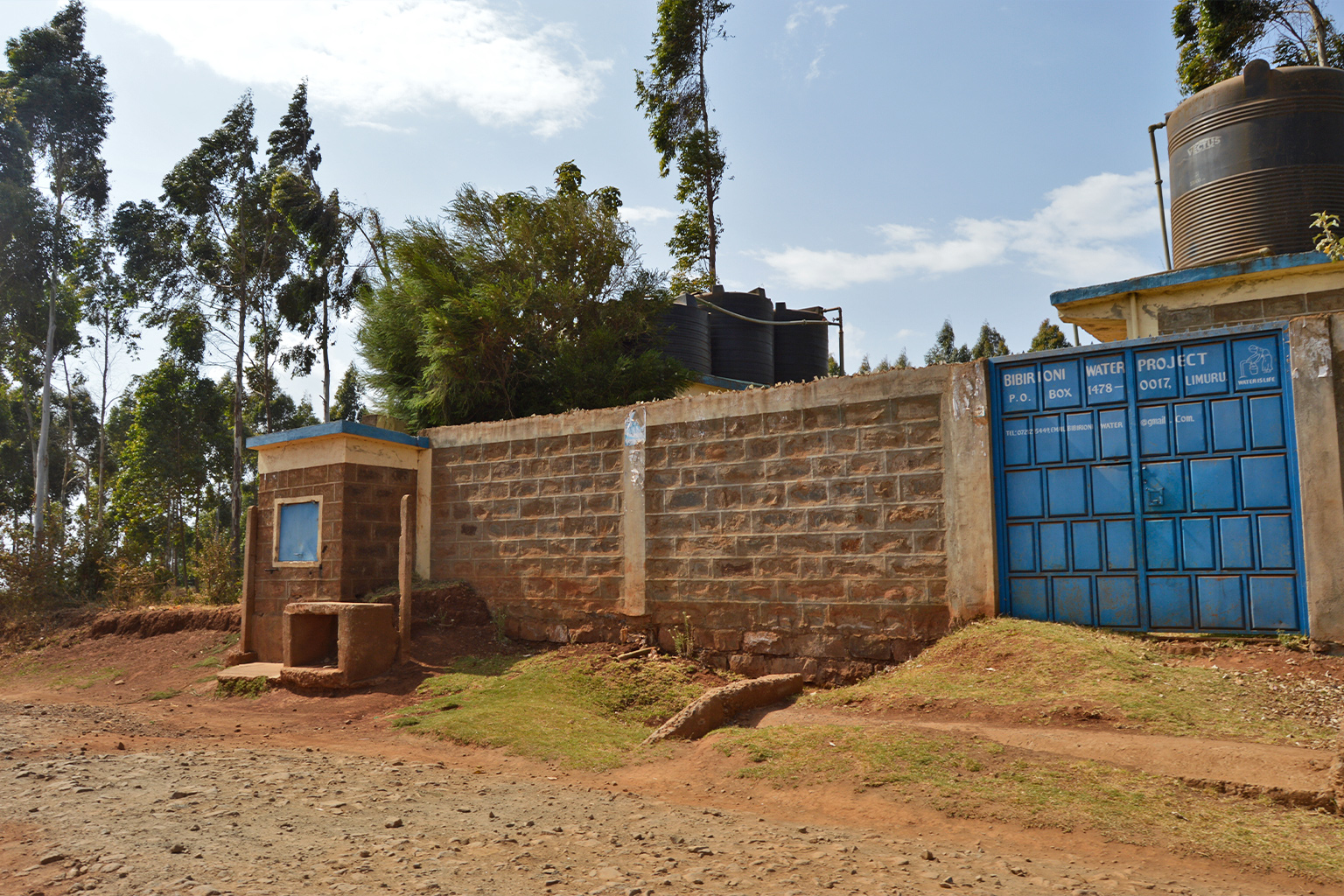
The only other place Karanja’s family and many of the residents can get water is at Peter Mwangi’s home. Peter is among the few people in the village to have piped water supplied by Limuru water company installed at his home. Six women surround a tap while seated on water containers. Among them is Josephine Nduta, Karanja’s wife. Water trickles from the tap and the women engage in animated talk as they wait for their containers to fill.
“We have had water problems before, but this time it is worse than ever,” Nduta says. “Sometimes I wait almost the whole day to fetch water, but I have to wait anyway because I cannot go back without water.”
With the slow flow of water, it takes 15 minutes to fill one 20-liter (5-gallon) container. Nduta has four and has to wait at least four hours before she can fetch, since four women are ahead of her, each with four containers to fill. The water flow is not usually this slow but today it is exacerbated by a power outage.
“Every week we only get water twice, on Tuesdays and Fridays,” Nduta says. “Sometimes there is water only one day a week.” Nduta says things have become hard for her family since she spends hours at the water point, time which she could have otherwise spent working. Both she and her husband, Njuguna, depend on contractual day labor for income. Moreover, she says, some water vendors take advantage of the situation and charge more. “We normally buy a 20-liter container of water at 5 shillings [$0.04] but now we have to pay double that,” she says.

Given the water shortage, the county-run Limuru water company has no option but to ration water. This has made a dire situation worse since only a handful of people can afford to install piped water, which costs 4,500 shillings [$34] without plumbing costs. This is beyond reach for many people, given the unemployment rate in Kiambu county is 17%, according to the county website. Most of the employed work in farms, industries and quarry sites, while others like Njuguna are subsistence farmers.
“This [water crisis] is a result of long-term human impact on [the] environment. … Natural phenomena [are] accelerated by human activity, then we have such phenomena like what we are having today of long and severe drought,” says David Kuria, Kiambu County Executive Committee member in charge of water, environment and natural resources. “We [humans] have turned some areas into concrete jungles,” he says. “Human population has really increased, and therefore, the need for houses; and when you have more houses, they alter the ecosystem; and therefore, when you alter the ecosystem, you affect climate and you affect nature.”
According to him, excessive air pollution, deforestation, encroachment on riparian land and pollution of water sources have accelerated climate change and worsened the effects of drought. The drought and subsequent water rationing have affected many residents of Kiambu, forcing them to go to far-flung places in search of water or pay more to get water, he says.
The primary source of water for Kiambu county is rivers originating from the southern Aberdare Forest, most of which, Kuria says, have dried. In February 2023, more than 40,000 acres of the Aberdare Forest was destroyed by wildfire, further posing serious environmental threats. According to Kuria, the situation is worrying and he says only the rains could make things better.

With the onset of the long-rains season, the Kenya Meteorological Department forecasts that much of the country is likely to receive near-average rainfall. But this comes on the heels of the sixth consecutive failed rainy season in the Horn of Africa and many parts of Kenya, and it’s unclear how this season will affect the long-term health of the country’s waterways.
On March 22, Kenya joined the world in celebrating the U.N.-designated World Water Day, but with little to celebrate given the extended water crisis in parts of the country.
“As a government, we are rationing water and encouraging people to share the available water and also use water sparingly in a sustainable way,” says Kuria. He asserts that conservation measures, including securing water sources and planting trees, could help alleviate the water crisis in the long term. Moreover, innovative methods of water harvesting, such as retention dams, which store water over long periods, would help in ensuring water security during dry seasons.
Macharia echoes Kuria’s sentiments, explaining that the effects of drought are a result of human activities contributing to climate change. As a solution, she emphasizes creating awareness about conservation efforts among local communities, since the benefits of natural resources to them and the ecosystem are not always clear. She supports sustainable agriculture practices, which involve cultivating away from wetlands to avoid siltation, which makes the wetlands shallow and prone to drying up.
Human beings must be at the center of restoration efforts, she says, quoting the late Kenyan nobel laureate and conservationist Wangari Maathai: Nature is “unforgiving.”
Banner image: James Njuguna, a shepherd who lives near the Manguo swamp. Image by Calvin Rock Odhiambo/Mongabay.
Herders turn to fishing in the desert amid severe drought, putting pressure on fish population
Citation:
Macharia, J. M., Thenya, T., & Ndiritu, G. G. (2010). Management of Highland wetlands in central Kenya: The importance of community education, awareness and eco-tourism in biodiversity conservation. Biodiversity, 11(1-2), 85-90. doi:10.1080/14888386.2010.9712652







